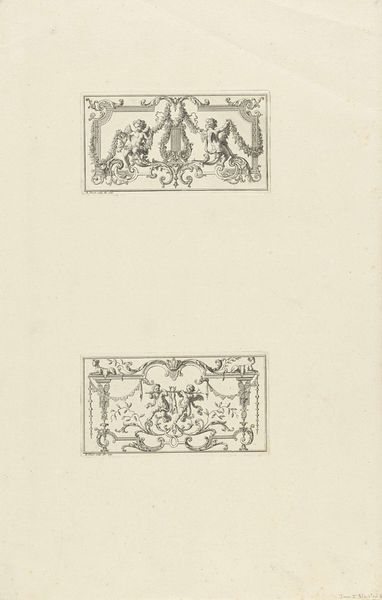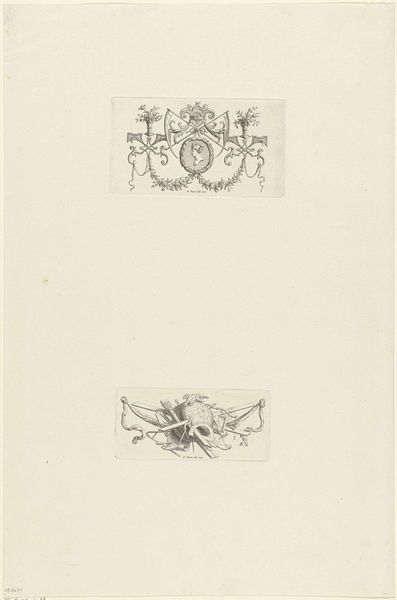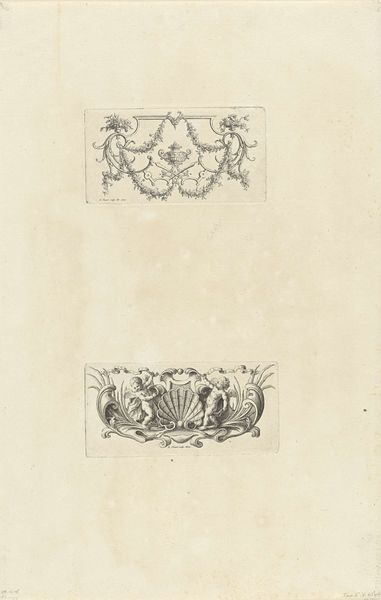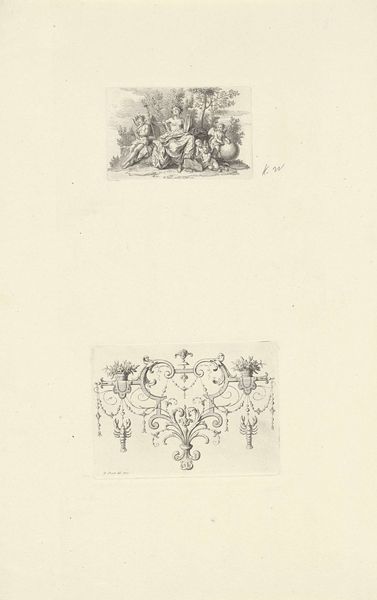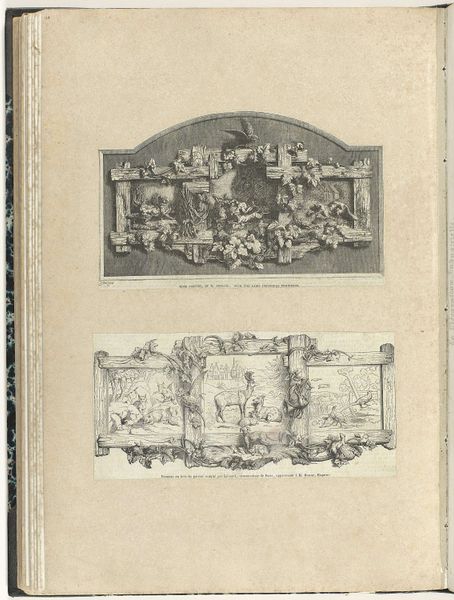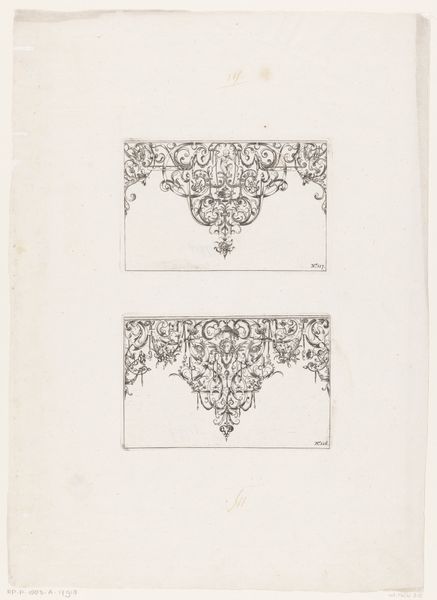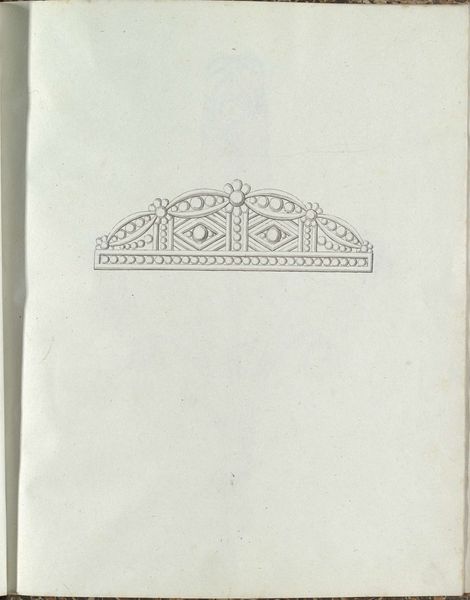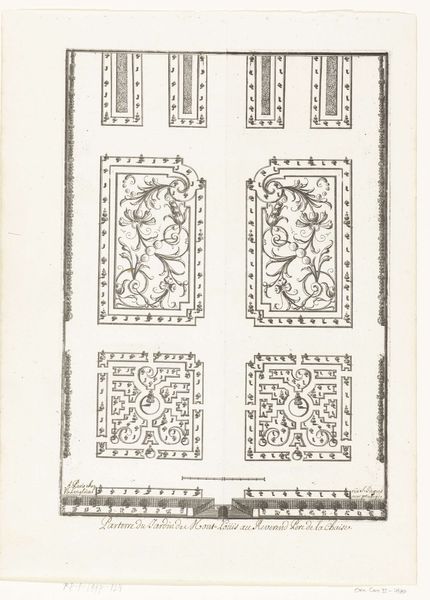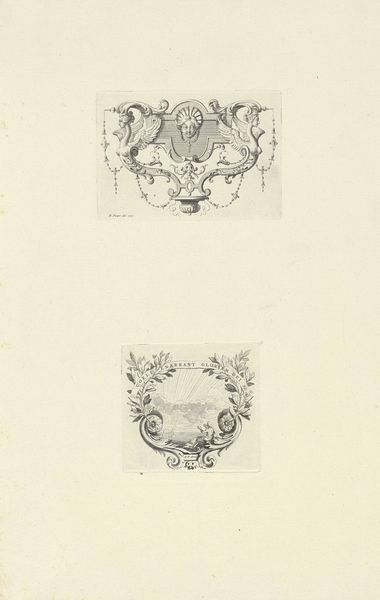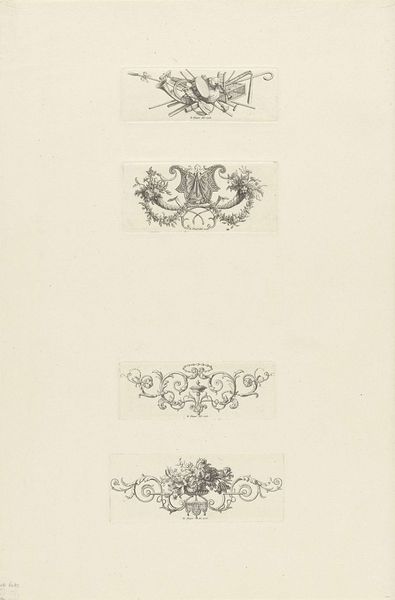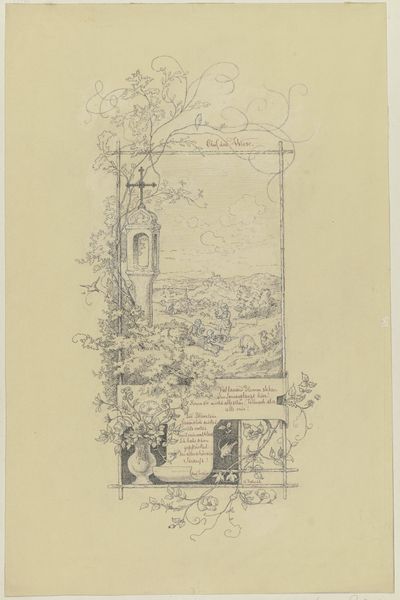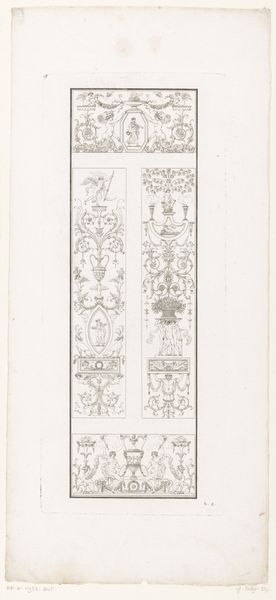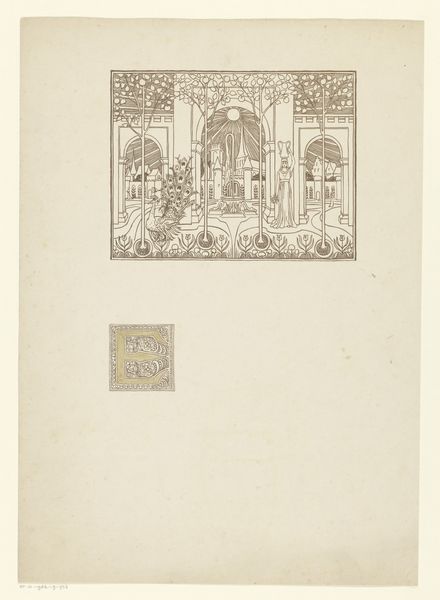
print, engraving
#
baroque
# print
#
old engraving style
#
figuration
#
personal sketchbook
#
idea generation sketch
#
line
#
genre-painting
#
history-painting
#
decorative-art
#
sketchbook art
#
engraving
Dimensions: height 418 mm, width 267 mm
Copyright: Rijks Museum: Open Domain
Curator: Let's consider this intriguing print by Bernard Picart, crafted in 1727. It is titled "Putti bij een offerzuil / Herrijzende feniks," and currently resides here at the Rijksmuseum. Editor: Immediately, I am struck by the dichotomy of scenes within this single print – a certain lightness, almost frivolity, in the putti contrasted against what appears a heraldic emblem with more sober intentions. The textures conveyed through engraving also produce different emotional valences in these distinct zones. Curator: Yes, the composition is intentionally bifurcated. On the upper register, you see a gathering of putti surrounding what we believe to be an altar for offerings. Observe the elaborate architectural elements - a suspended canopy, meticulously rendered balustrades and ornamentation. Picart was quite concerned with balance and rhythmic intervals between these elements. Editor: Absolutely, the eye is drawn across the surface through this visual harmony. But what historical contexts might elucidate these representations? Putti often represented innocence or divine love within religious art, and their presence around such grand symbolic offerings perhaps connects to a certain tradition of civic ritual…or maybe elite leisure. Curator: That is an important historical consideration, since Picart did use semiotic traditions. In terms of technique, let's observe Picart's masterly use of line. Each stroke, varying in weight and density, creates volume and shadow, lending depth to the figures. Notice the almost obsessive level of detail, from the rendering of the fabrics to the subtle shading on the putti's skin. Editor: A close look certainly justifies further interpretations. Given the era in which Picart was operating, these detailed embellishments also imply power, wealth, and order. It becomes increasingly hard to overlook how the cultural milieu, the expectations placed upon art and artistic practices, profoundly impact meaning here. Curator: Precisely! This allows for deeper engagement with its forms. By analyzing compositional aspects, Picart reveals a very rigorous understanding of decorative-art conventions. It represents both playfulness and order that define much of Baroque design as a language. Editor: I find my own critical lens broadened considering form but also social histories. A richer understanding begins emerging of aesthetic purpose and cultural positioning within this work from 1727! Curator: A wonderfully complementary exploration! I’ll walk away from this conversation with renewed admiration for line and shape relationships in defining that Baroque elegance.
Comments
No comments
Be the first to comment and join the conversation on the ultimate creative platform.
